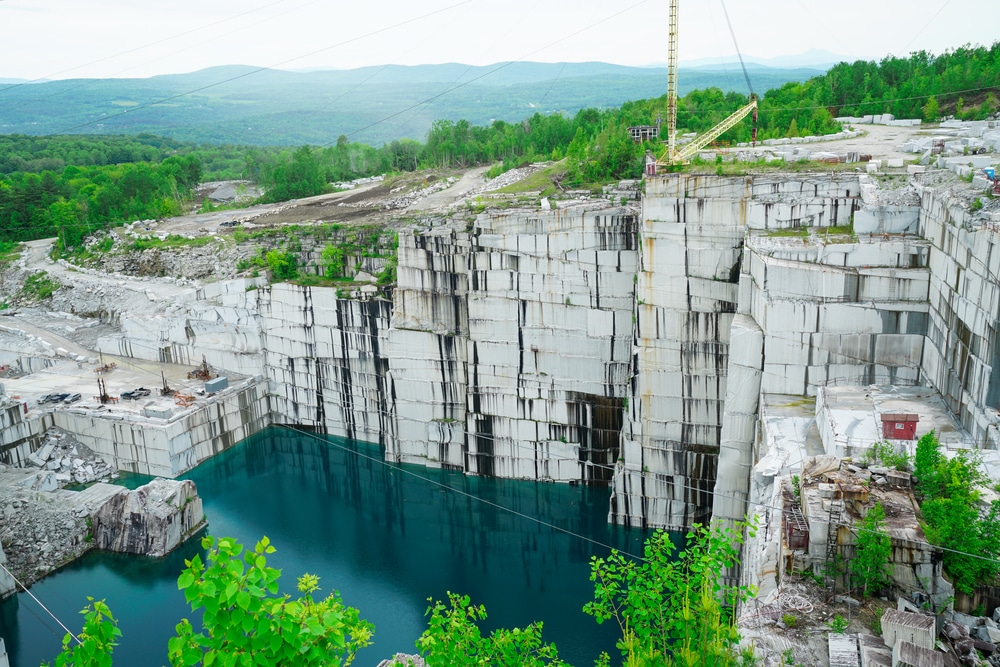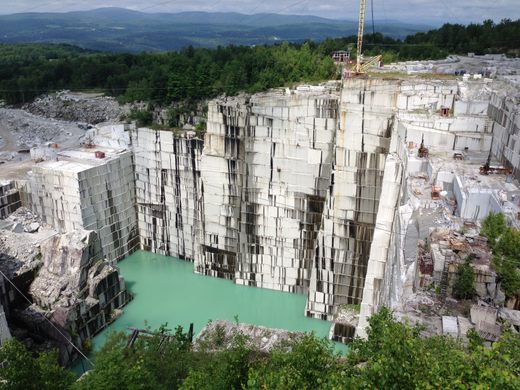Unearth Rustenburg's Heritage: A Scenic Tour of Granite Quarries in Rustenburg
Introducing the Mysteries: Inside the Operations of Granite Quarries
Today, we begin on a voyage of exploration, peeling off back the layers of secrecy that surround the procedures of granite quarries. Prepare to be surprised as we dig right into the geological marvels, uncover the intricate strategies used in quarrying, and witness the precision and virtuosity involved in changing raw granite obstructs right into building masterpieces.
The Formation of Granite: A Geological Marvel
Granite, an awe-inspiring geological wonder, is formed with a complex procedure that extends numerous years. This igneous rock stems deep within the Earth's crust, where severe warmth and stress create the melting and recrystallization of existing rocks. The development of granite starts with the air conditioning of lava, the liquified rock that exists beneath the Earth's surface area. As the magma cools, it solidifies into igneous rocks, which can later be exposed through the erosion of overlaping layers.
The one-of-a-kind structure of granite is a result of its slow-moving air conditioning procedure. This slow cooling permits the minerals within the magma to grow and crystallize, creating a coarse-grained appearance that defines granite's particular appearance. One of the most bountiful minerals located in granite are quartz, mica, and feldspar, which add to its hardness, longevity, and unique speckled patterns.
Over numerous years, the motion of tectonic plates and the forces of disintegration slowly bring granite to the Earth's surface area. As soon as subjected, granite can be quarried and changed right into different building and ornamental functions, such as counter tops, floor covering, and monuments.

Quarrying Techniques: From Dynamites to Diamond Cable Sawing
Quarrying techniques have actually progressed with time, transitioning from using nitroglycerins to the application of diamond wire sawing. Typically, nitroglycerins were used to break and loosen up apart the granite from its natural bedrock. This process involved boring holes into the rock face, placing nitroglycerins, and after that detonating them to develop fractures. While reliable, this method had several disadvantages, consisting of security problems, environmental influence, and the unforeseeable nature of the cracks.
In recent times, the introduction of diamond cord sawing has transformed the quarrying sector. This technique includes making use of a diamond-coated wire to cut with the granite. The cord is drawn back and forth in a sawing movement, gradually slicing via the rock with accuracy and control. Compared to dynamites, ruby wire sawing offers many benefits. It is a safer and extra eco-friendly technique, as it does not involve using nitroglycerins or generate extreme noise, dust, or vibrations. Furthermore, the cuts made by ruby cord sawing are tidy and exact, minimizing waste and optimizing the useful product.
The execution of ruby cable sawing has actually likewise boosted efficiency in granite quarries. It enables faster cutting and extraction, reducing downtime and enhancing the overall efficiency of the operation. Furthermore, this strategy makes it possible for quarry drivers to draw out larger blocks of granite, which can be used for numerous purposes, consisting of construction, sculpture, and interior decoration.
Extraction and Block Reducing: Revealing the Art of Precision
The procedure of extraction and block cutting in granite quarries showcases the meticulous virtuosity required to achieve accuracy in the production of granite products. This stage of the quarrying procedure includes the careful removal of huge granite blocks from the planet and the subsequent cutting of these blocks right into smaller, more convenient sizes.
To remove the granite blocks, quarry employees employ a mix of hefty equipment, such as excavators and loaders, together with proficient manual work. The granite blocks are meticulously detached from the surrounding rock using specialized methods and tools. This procedure requires accuracy and know-how to ensure the blocks are removed without damage or breakage.
As soon as the blocks are extracted, they are moved to a cutting center where they undertake further handling. Block cutting is a detailed and delicate process that needs accuracy cutting tools and machinery - granite quarries in rustenburg. Knowledgeable craftsmen utilize diamond-tipped saws to meticulously slice the blocks into slabs of the wanted density. This step needs careful focus to information to ensure the slabs are reduced equally and properly.
The art of accuracy in removal and block cutting is crucial in the production of granite materials. The resulting slabs are used in a variety of applications, including countertops, flooring, and architectural facades. The precise interest to detail and precision in these processes guarantees that the end products satisfy the greatest requirements of high quality and toughness.
Transport and Logistics: Moving Hills of Rock
The transport and logistics included in moving mountains of stone from the quarry site to their designated locations require careful preparation and control. As soon as the granite blocks are removed and reduced, the next vital action is to transport them effectively and safely (granite quarries in rustenburg). This process entails different components, consisting of transport modes, devices, and routes
Transport settings play an essential function in the motion of granite blocks. Trucks are frequently made use of for short-distance transport due to their adaptability and accessibility. They can navigate via narrow roadways and deliver the rock straight to building websites. For long-distance transport, ships and trains are favored. Railways provide a cost-efficient and eco-friendly alternative, while ships enable for mass transportation to distant places.
Equipment such as forklifts and cranes are utilized to tons and unload the granite obstructs onto the transport cars. These equipments guarantee the secure my sources handling of the heavy rock, minimizing the danger of damages during transport.

Polishing and Finishing: Transforming Granite Into Architectural Masterpieces
To change granite into building masterpieces, the procedure of completing and brightening is thoroughly performed with precision and craftsmanship. Once the granite blocks are drawn out from the quarry and carried to the handling facility, they go through several stages of polishing and finishing to boost their visual charm and toughness.
The very first step in the polishing process is to eliminate any kind of rough sides and imperfections from the surface of the granite. This is done making use of specialized equipment that utilizes unpleasant pads or ruby devices. The granite is then thoroughly brightened using considerably finer grits to attain a glossy and smooth coating.
After polishing, the granite undergoes a procedure called developing. This includes making use of abrasive pads or brushes to create a matte or satin finish, depending upon the wanted look. Developing additionally helps to additionally enhance the all-natural color and pattern of the granite.
When the wanted coating is attained, the granite is thoroughly cleansed and examined for any kind of remaining blemishes. It is after that treated with a sealant to safeguard it from stains, dampness, and other ecological elements. This sealant likewise assists to boost the shine and durability of the granite.
The final action in the sprucing up and other ending up procedure is quality control. Each slab of granite is carefully checked to make certain that it meets the highest requirements of quality and workmanship. Any type of flaws or incongruities are dealt with prior to the granite is ready to be changed right into building masterpieces.
Conclusion
In verdict, the operations of granite quarries entail an intricate process that showcases the wonder of geological formation, the usage of advanced quarrying strategies, and the accuracy in removal and block cutting. Additionally, transportation and logistics play an important duty in moving the substantial amounts of rock, while polishing and finishing strategies transform granite right into building masterpieces. The world of granite quarries introduces a fascinating blend of creativity, ability, and science.
Prepare to be surprised as we delve right into the geological marvels, uncover the complex techniques utilized in quarrying, and witness the accuracy and virtuosity involved in transforming raw granite blocks right into building masterpieces.To remove the granite obstructs, quarry workers utilize a mix of hefty equipment, such as loaders and excavators, along with competent hands-on labor. The granite blocks are very carefully separated from the bordering rock utilizing specialized tools and strategies.The art of accuracy in removal and block cutting is important in the production of granite materials.In final thought, the operations of granite quarries include a complex process that showcases the marvel of geological formation, the use of innovative quarrying techniques, and the accuracy in removal and block cutting.